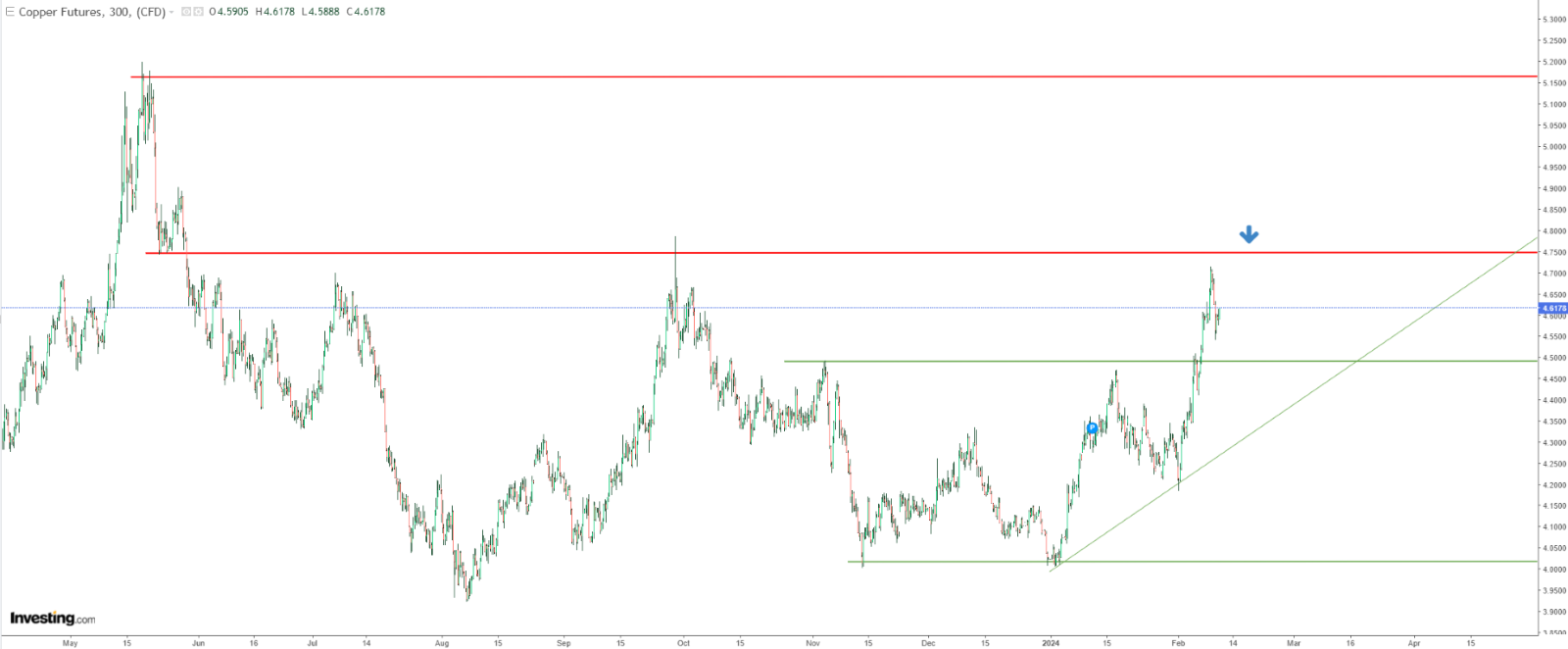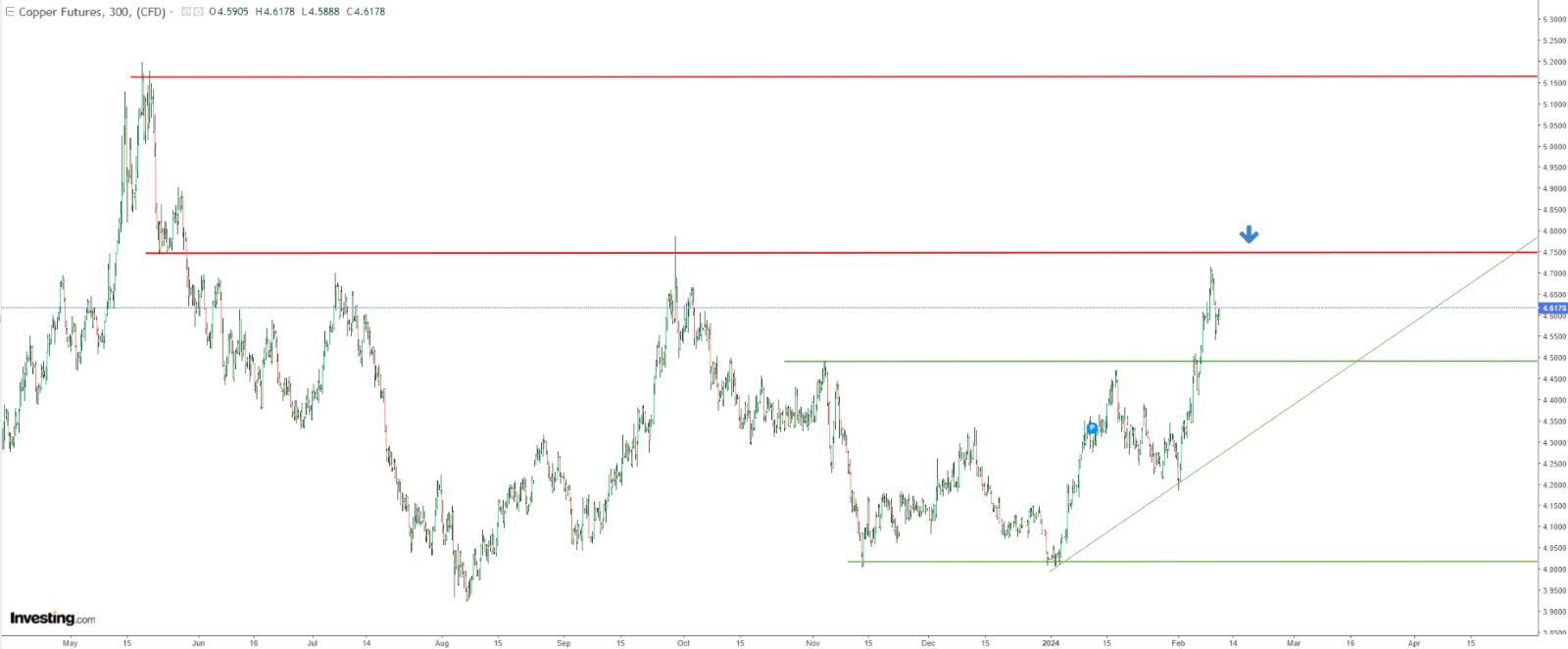- Since the beginning of the year, copper prices on global markets have been rising rapidly.
- Investors expect the imposition of copper tariffs as a continuation of a broad-based trade policy.
- Structural shortages underpin possible long-term uptrend.
- Get the AI-powered monthly updated list of stock picks that smashed the S&P 500 in 2024 for less than $9 a month here.
Copper prices on U.S. exchanges have surged by over 14% since the start of the year, and this upward trend appears likely to persist, potentially adding to inflationary pressures.
This is largely on the back of the expectation of new tariffs, with at least a 10% levy on U.S. copper imports following the imposition of an additional 25% tariffs on steel and aluminium.
Meanwhile, China's influence on the global copper market remains strong, with economic activity expected to rebound after the New Year celebrations. This could boost short-term buying interest. The market aims to exceed the September highs, potentially pushing prices towards $5 per pound, a level not seen since May of last year.
Supply-Side Challenges Could Push Copper Prices Higher
The ongoing global energy transition and the growth of China’s commodity-intensive markets have significantly increased copper demand over recent decades.
According to most forecasts, this trend is expected to continue in the coming years. Reports from China suggest that copper reserves might grow by 5-10% by 2027 due to the strategic importance of the metal.
The sustainability of this growth will partly depend on whether China can maintain an annual economic growth rate of at least 5%, potentially supported by various government aid programs.
Chile, the world’s largest copper producer, could face a deficit of 118,000 tonnes of copper this year, despite an expected 4.6% increase in production, as per Chile’s state-owned copper commission, Cochilco. With more than a 25% share of the global market, any disruptions or issues impacting Chilean supply might be closely monitored by market participants worldwide.
The supply side of the copper market is anticipated to encounter several challenges in the coming years. Key among these are increasingly stringent environmental regulations and the growing complexity of mining operations. Additionally, the opening of new mines is occurring at a relatively slow pace, a process that inherently takes multiple years.
In the short to medium term, the market has started to factor in the potential imposition of tariffs on U.S. copper imports, a possibility mentioned by Donald Trump last week. However, no specific actions have been taken thus far. If such tariffs are implemented, it could realistically push copper prices back to around $5 per pound.
Technical View: Copper Prices Near Key Resistance
Recently, copper prices have experienced a strong rally, although this momentum has slowed just below a key resistance level, marked by the highs of last September.
Despite this pause, the primary outlook remains a continuation of the upward trend. Should prices break above $4.78 per pound, the $5 threshold would become a likely target, potentially setting the stage for an attempt to reach historic highs.
The nearest support remains around 4.50, additionally supported by the local uptrend line running just below. 
A breakout of this price area will be a significant signal of a change in the overall trend.
